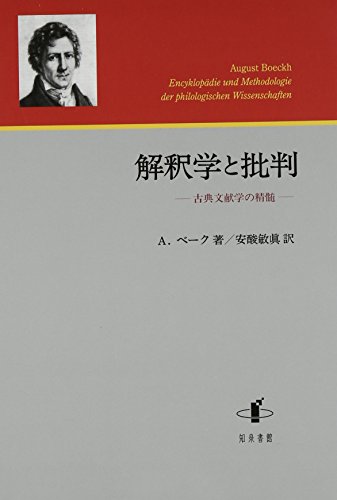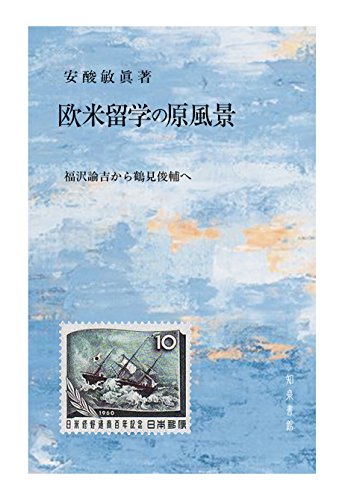10 0 0 0 IR レッシングとゲッツェの論争 : その最初の鍔ぜり合い
- 著者
- 安酸 敏眞
- 出版者
- 聖学院大学
- 雑誌
- 聖学院大学論叢 (ISSN:09152539)
- 巻号頁・発行日
- vol.6, pp.179-192, 1994-01-20
From 1774 onward G. E. Lessing, as librarian of the famous Herzog August Bibliothek at Wolfenbüttel, published a series of manuscripts and other holdings which he had discovered in the Library. Among them were the Fragmente eines Ungenannten. The publication of these fragments aroused a heated controversy because of the unusually critical ideas contained in them. Many theologians and clergymen hysterically responded with severe attacks on the unnamed author. But J. M. Goeze, who was reviled as "the Papst Hammoniens" or "der Inquisitor", reproached not so much the unnamed author as the editor of the fragments for the circulation of blasphemous ideas. Lessing bravely counterattacked the inquisitor. Hence the face-to-face confrontation between Lessing and Goeze. The purpose of this study is to examine the first phase of the controversy with the aim of shedding light on the real motive of Lessing and Goeze.
6 0 0 0 OA 村岡典嗣と波多野精一 : 嚮応する二つの「学問的精神」
- 著者
- 安酸 敏眞
- 出版者
- 北海学園大学人文学会
- 雑誌
- 北海学園大学人文論集
- 巻号頁・発行日
- vol.39, pp.199-238, 2008-03
3 0 0 0 「万有在神論」(Panentheismus)についての研究
本研究は、「万有在神論」(Panentheismus)について検討し、その思想的特質を剔抉することを目指した。当初の計画では、(1)セバスティアン・フランク、(2)レッシング、(3)フェヒナー、(4)トレルチ、(5)プロセス思想家、(6)西田幾多郎を取り上げる予定であったが、三年間で纏まった結論を得るには無理があることがわかったので、(1)、(2)、(4)を重点的に研究し、また新たにK.C.F.クラウゼを加えることにした。本研究によって明らかになったことは、(1)この用語がクラウゼによって1828年に造語されたものであること、(2)この概念は神の世界超越性と世界の神内在性を同時に主張しようとしており、したがって汎神論とは一線を画すものであること、(3)クラウゼ自身は"Panentheismus"以外に、"Allingottlehre"という用語も用いていること、(4)「万有在神論」は、ユダヤ・キリスト教的超越神論とストア主義的汎神論(あるいはスピノザ主義的内在論)を総合するような立場を目指していること、(5)しかし汎神論との区別はもとよりきわめて微妙であり、この立場は有神論の側からつねに汎神論の嫌疑をかけられてきたこと、などである。しかし「万有在神論」のモチーフは新約聖書の中にも見出され、また神秘主義やスピリチュアリスムスの系譜にもその方向性を示唆するものが少なくない。その一例をなすフランクの立場はしばしば汎神論と見なされているが、本研究によればむしろ「万有在神論」として捉えられるべきである。レッシシングの立場は"Panta-en-theismus"と名づけうるような独自の特質を備えている。トレルチの神概念は「万有在神論」の方向を示唆しているが、未だ概念的明晰さを欠いている。「万有在神論」の現代的妥当性を擁護するマッコーリーは、それに代えて「弁証法的有神論」(dialectical theism)という用語を提案している。今後の課題は、キリスト教的な「万有在神論」と東洋的なそれとの間の思想的相違を究明することである。
3 0 0 0 OA J・G・ドロイゼンにおける歴史主義と解釈学(第四部会,<特集>第六十九回学術大会紀要)
- 著者
- 安酸 敏眞
- 出版者
- 日本宗教学会
- 雑誌
- 宗教研究 (ISSN:03873293)
- 巻号頁・発行日
- vol.84, no.4, pp.1101-1103, 2011-03-30
3 0 0 0 IR ドロイゼンの「探究的理解」について
- 著者
- 安酸 敏眞
- 出版者
- 北海学園大学大学院文学研究科
- 雑誌
- 年報新人文学 (ISSN:18831524)
- 巻号頁・発行日
- no.7, pp.166-214, 2010-12
3 0 0 0 IR 解釈学と歴史主義 : A・ベークとJ・G・ドロイゼンを中心に(退職記念)
- 著者
- 安酸 敏眞
- 出版者
- 北海学園大学
- 雑誌
- 北海学園大学人文論集 (ISSN:09199608)
- 巻号頁・発行日
- vol.45, pp.143-176, 2010-03-31
3 0 0 0 解釈学と批判 : 古典文献学の精髄
2 0 0 0 IR ディルタイにおける解釈学と歴史主義
- 著者
- 安酸 敏眞
- 出版者
- 北海学園大学人文学会
- 雑誌
- 北海学園大学人文論集 (ISSN:09199608)
- 巻号頁・発行日
- no.49, pp.1-33, 2011-07
1 0 0 0 OA 恐れ/畏れを生きる 一キリスト教思想史家の視点
- 著者
- 安酸 敏眞
- 出版者
- 宗教哲学会
- 雑誌
- 宗教哲学研究 (ISSN:02897105)
- 巻号頁・発行日
- vol.39, pp.1-13, 2022 (Released:2022-06-05)
The prevailing pandemic caused by the covid-19 has plunged the entire world into anxiety and fear. How does a corona virus multiply itself and infect human beings? How can we cope with the anxiety and fear we feel in face with the covid-19? What on earth are we anxious about? What kind of fear shows itself in the pandemic? A complex of problems raised by the pandemic should be resolved not only by professionals in an infectious disease, specialists in hygiene, physicians, nurses, politicians, policymakers, and economists, but also by philosophers/scientists in religion, theologians, and persons engaged in religious practice. This paper strives to provide an analysis of the corona virus pandemic from the point of view of a historian of Christian thought. Insight into the invisible, the essential role of breath and breathing for human life, something transcendent beyond the boundaries of human reason, and agendas of a theology of kenosis are the main topics of the paper.
1 0 0 0 IR シュライアーマッハーにおける一般解釈学の構想
- 著者
- 安酸 敏眞
- 出版者
- 北海学園大学人文学会
- 雑誌
- 北海学園大学人文論集 (ISSN:09199608)
- 巻号頁・発行日
- no.50, pp.23-59, 2011-11
1 0 0 0 IR エルンスト・トレルチにおける「歴史化」の概念 (退職記念 寺田稔教授 小野寺静子教授)
- 著者
- 安酸 敏眞 塩濱 健児 YASUKATA oshimasa SHIOHAMA Kenji
- 出版者
- 北海学園大学人文学会
- 雑誌
- 北海学園大学人文論集 (ISSN:09199608)
- 巻号頁・発行日
- no.54, pp.83-120, 2013-03
1 0 0 0 欧米留学の原風景 : 福沢諭吉から鶴見俊輔へ
1 0 0 0 OA トレルチ,マイネッケ,ローゼンツヴァイク : 歴史主義の問題をめぐって
- 著者
- 安酸 敏眞 佐藤 貴史
- 出版者
- 北海学園大学
- 雑誌
- 北海学園大学人文論集 (ISSN:09199608)
- 巻号頁・発行日
- vol.28, pp.67-131, 2004-07-31
- 著者
- Boeckh August 安酸 敏眞
- 出版者
- 北海学園大学人文学会
- 雑誌
- 北海学園大学人文論集 (ISSN:09199608)
- 巻号頁・発行日
- no.40, pp.1-58, 2008-07
1 0 0 0 OA アウグスト・ベークと文献学
- 著者
- 安酸 敏眞
- 出版者
- 北海学園大学
- 雑誌
- 北海学園大学人文論集 (ISSN:09199608)
- 巻号頁・発行日
- vol.37, pp.174-128, 2007-10




